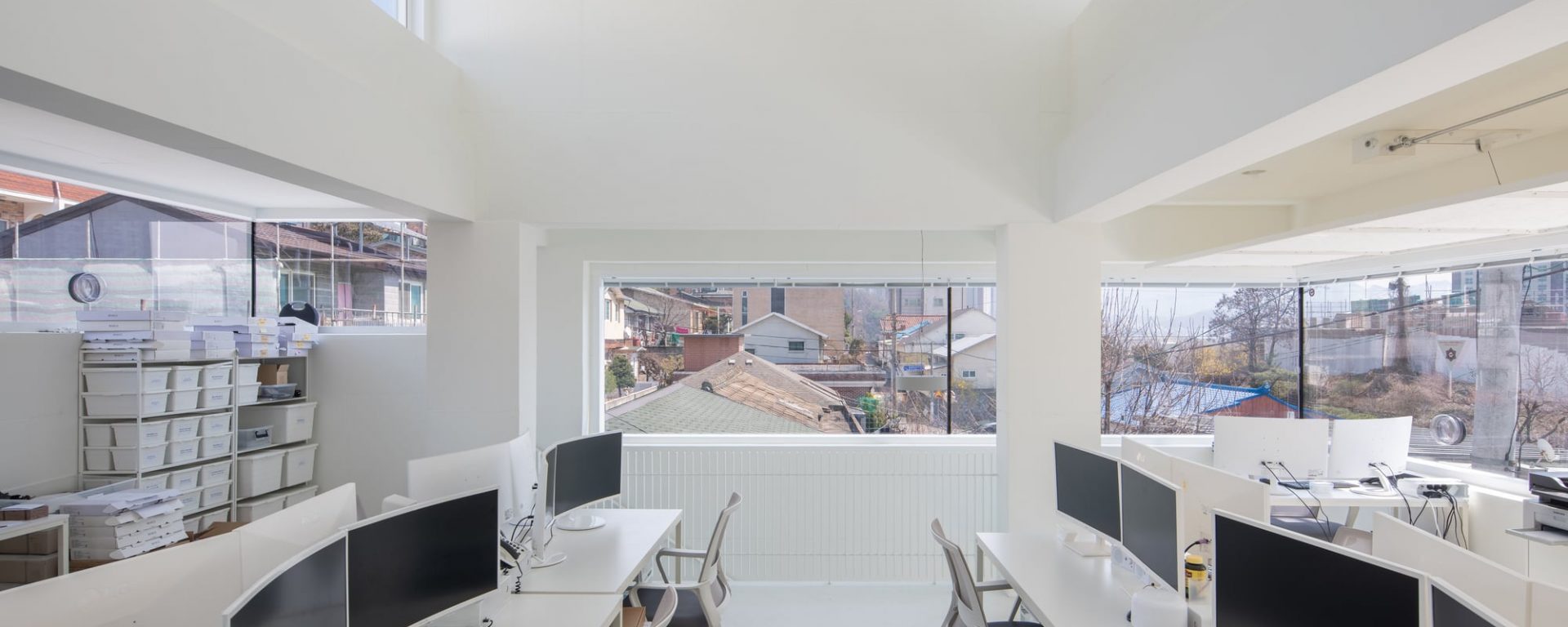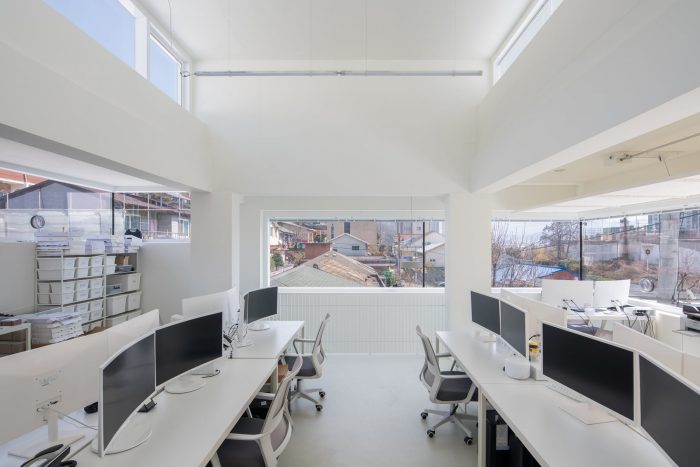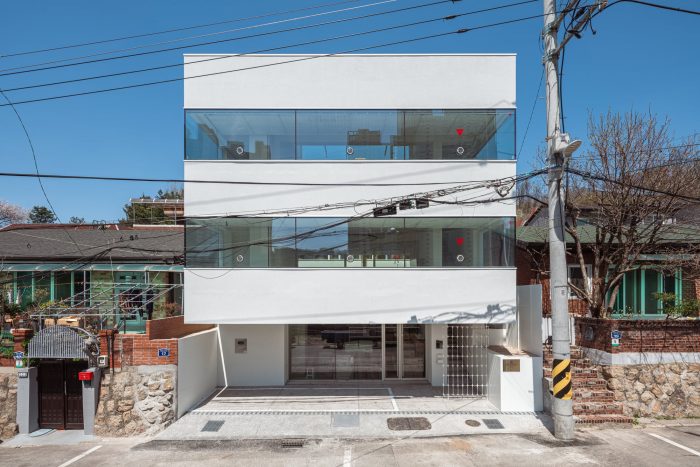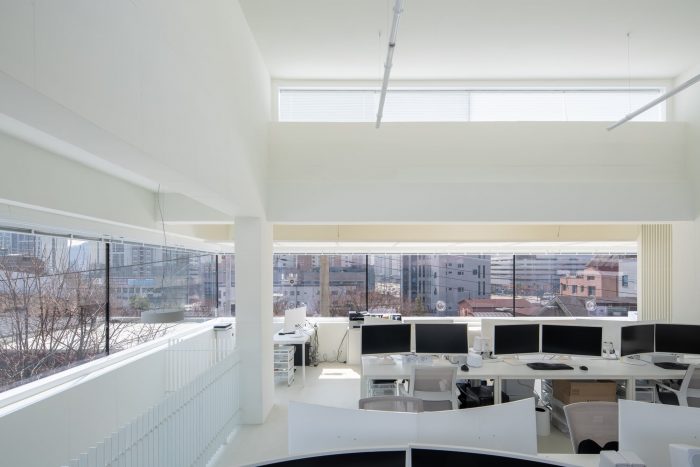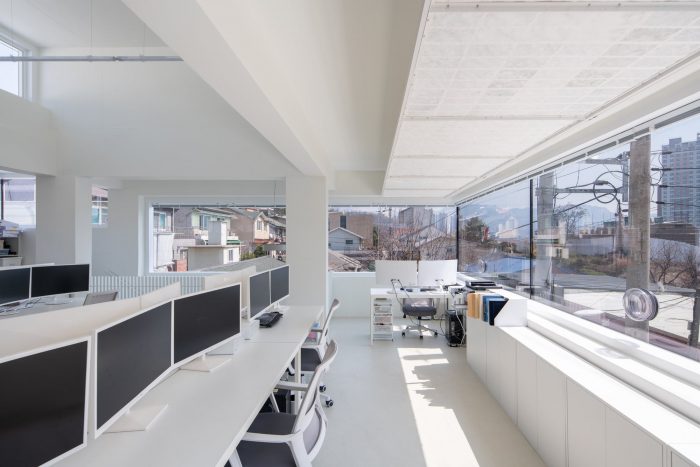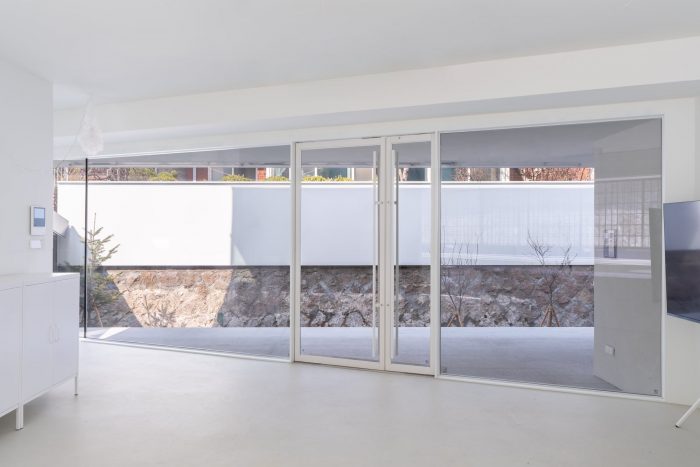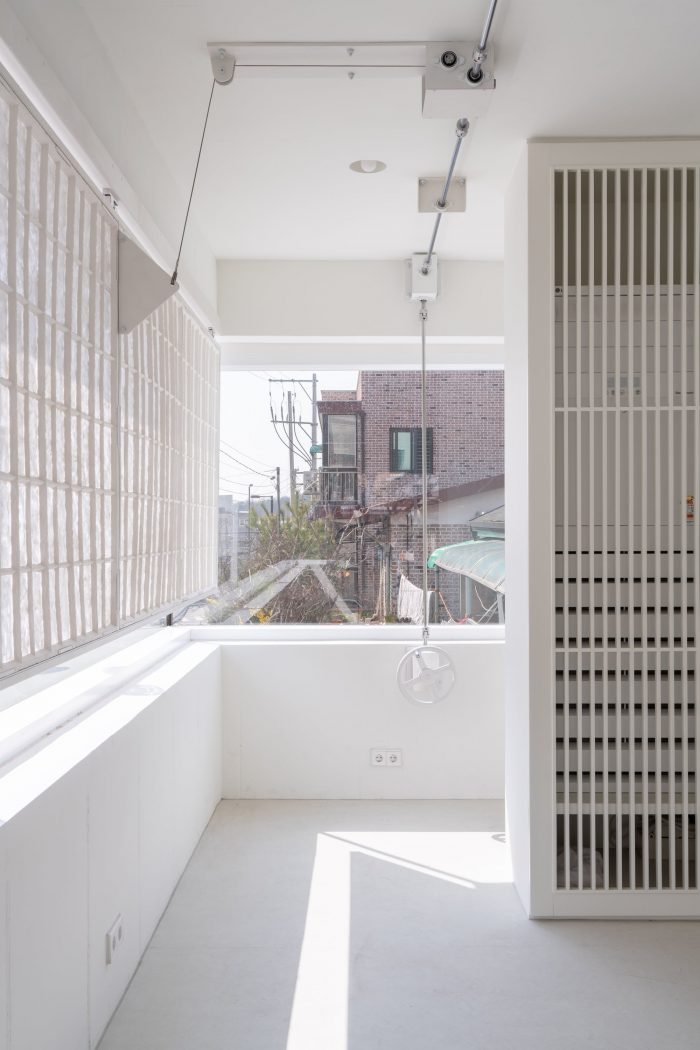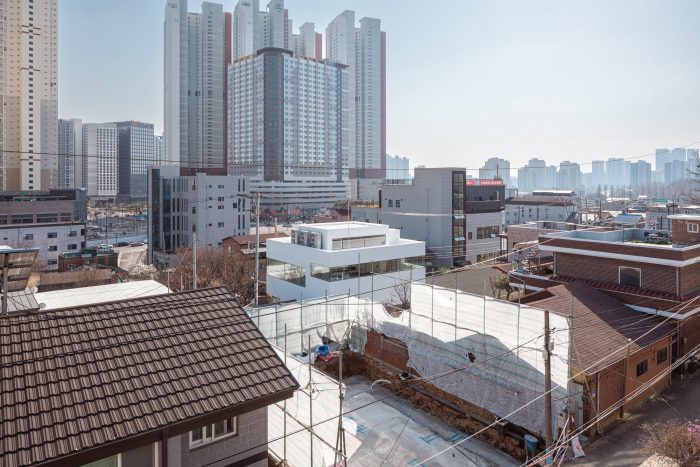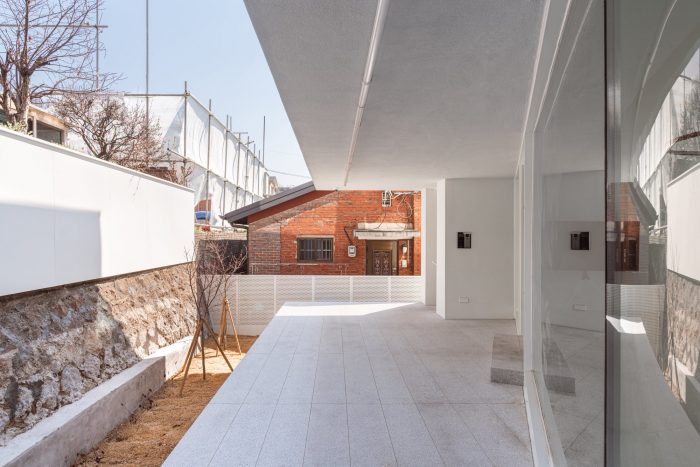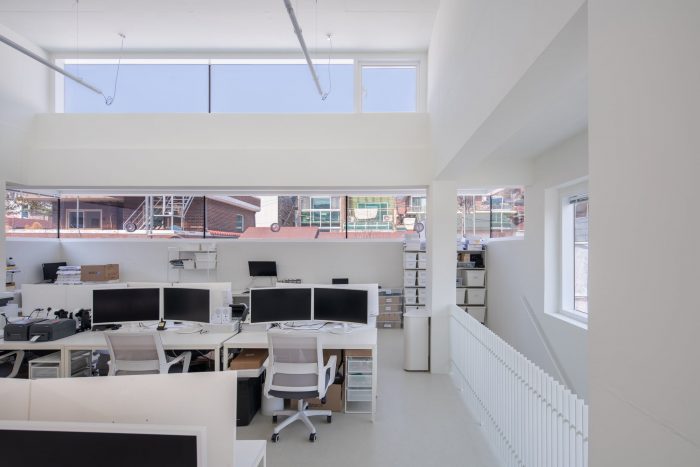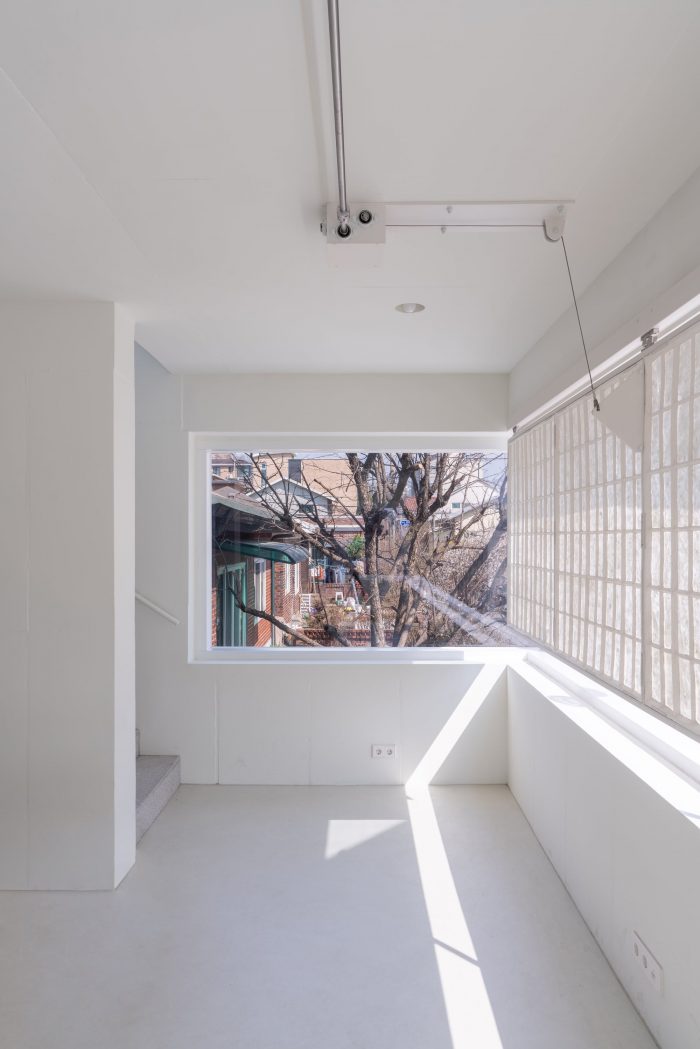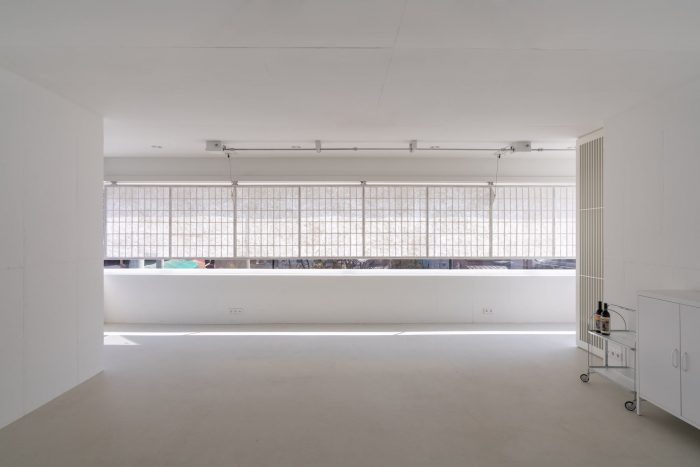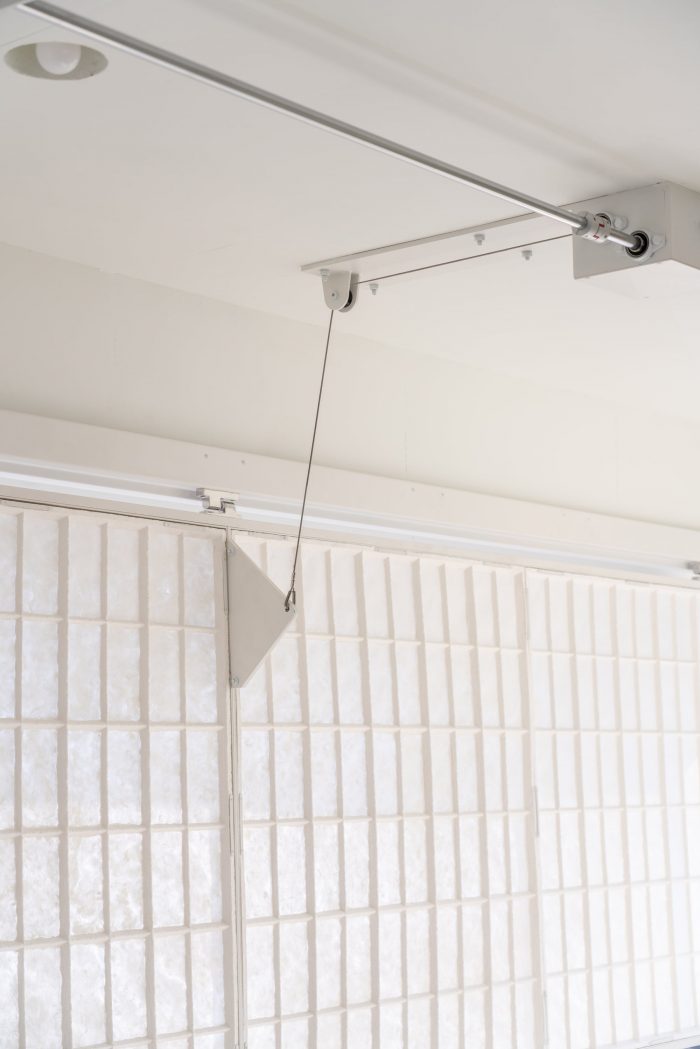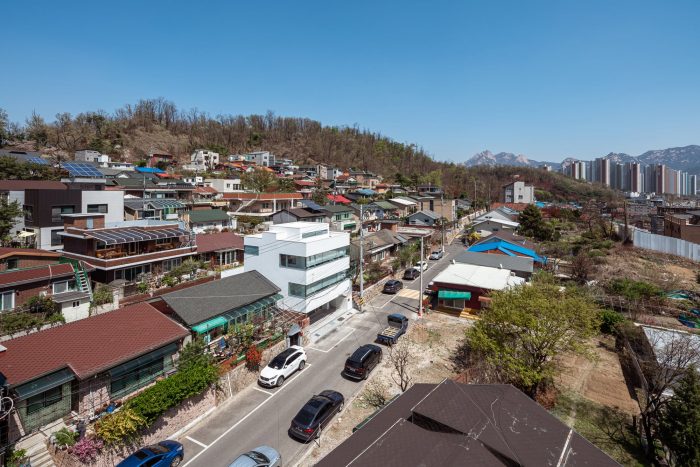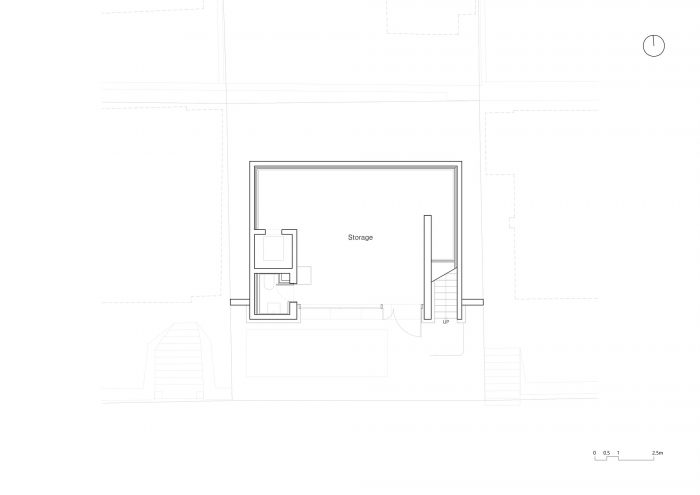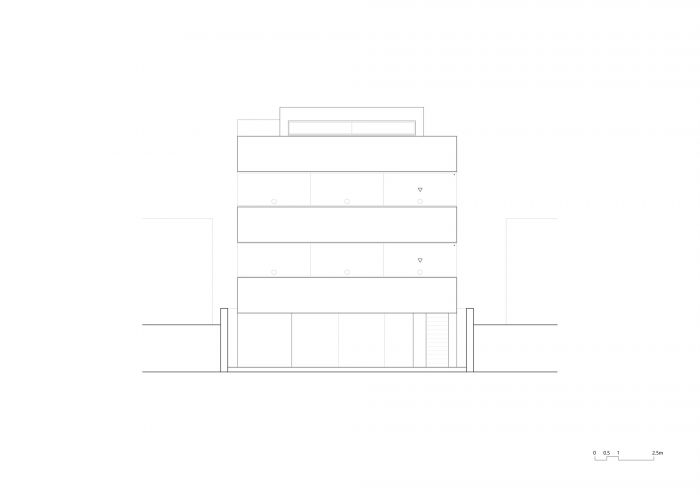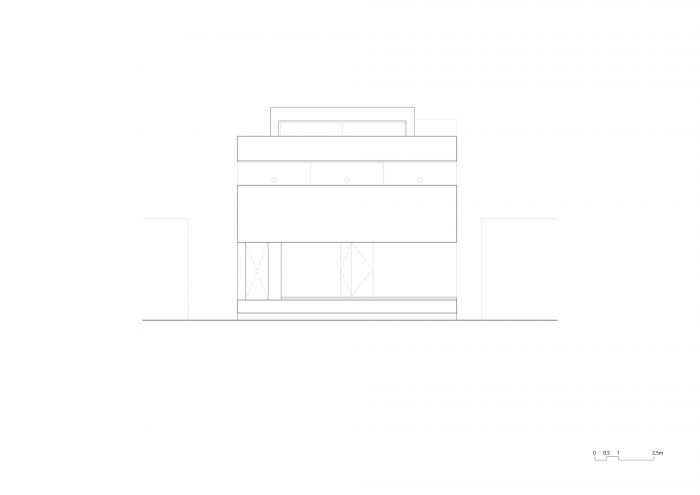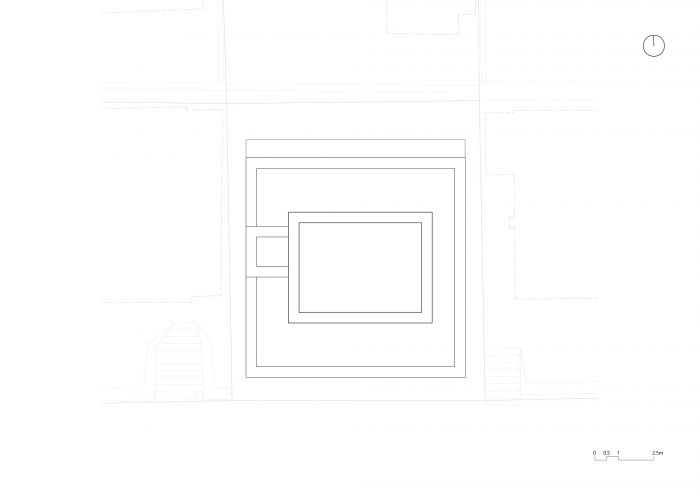办公大楼。一方面,办公大楼要创造舒适和个人的工作空间,另一方面,要代表公司的身份。我们认为可以用一系列的墙,我们面对和围绕着我们的日常物品,作为办公大楼设计的基本元素。我们通过使用简单的方法,如砌墙、挂墙、堵墙和开墙,创造了对背景、建筑形式和结构、外墙的情感表达以及空间内的感觉的回应。
Office Building. On the one hand, office buildings are expected to create comfortable and personal workspaces, on the other hand, to represent the company’s identity. We thought we could use a series of walls, everyday objects that we face and surround us, as the essential element for the design of the office building. We have created a response to the context, architecture form and construction, the emotional expression of the facade, and sensation within the space by using simple methods such as building, hanging, blocking, and opening walls.
场地。标准的一层楼房在地面上一字排开,石堤就放在上面。场地位于线的前端,房屋站在那里像楼梯一样踏着斜坡而下。爱心村是一个农村住宅区,大约50年前开始为政府雇员提供住房,其垂直重复的景观场景沿着山坡,以水平线连接堤坝、围墙、屋顶平面,在建筑上令人印象深刻。但我们别无选择,只能拆除水平线以保证必要的停车位。
Site. Standard one-story houses are lined up on the ground upon which the stone embankment is placed. The site is located at the front of the line where houses stand stepping down the slopes like stairs. The Village of Love, a rural housing complex that started out as housing for government employees about 50 years ago, is architecturally impressive for its vertically repeated landscape scene following the slope of a hill with the horizontal line connecting the embankment, fences, roof planes. But we had no other choice but to remove the horizontal line to secure the necessary car parking spaces.
墙体1。外墙作为栅栏放在公司的工作场所和邻居的生活空间之间,为两者提供隐私。考虑到办公室和邻居之间的楼层差异和距离,墙体阻挡了不需要的视线,同时允许从上面看。围墙一起形成了每个立面的立面,并进一步形成了建筑的形状。但房子的正面是通过僵硬地重复围墙的水平线而形成的,而不是对周围环境做出反应的结果。
Wall 1. The exterior walls act as a fence placed between the company’s workplace and its neighbor’s living space to provide both with privacy. In consideration of the floor-level difference and distance between the office and the neighborhood, the wall blocks unwanted views while allowing the view from above. The fences come together to form each facade elevation and furthermore the shape of the building. But the front facade of the house was created by rigidly repeating the horizontal lines of the fence, not the result of responding to the surroundings.
2号墙。正面的立面,采用韩国韩纸的色调和金属屏风,是为了与明亮和轻盈相联系,是对白色的不同表达方式。白色是Basics最喜欢的颜色。韩纸灯罩是由驱动器和1米×1.3米的模制板组成,由桑木纤维制成。为了给入口处增加一种独特的味道,我们使用了由不锈钢丝缠绕而成的金属屏风,相互交织在一起。这两个工艺元素不仅满足了公司描述自己的愿望,而且还力求软化正面的僵硬印象。
Wall 2. The frontal facade, with Korean Hanji paper shades and metal screens, is meant to relate to the brightness and lightness, a different way of expressing the color white. White is Basics’ favorite color. Hanji shades are comprised of drives and 1m x 1.3m molded panels made with Mulberry wood fibers. In order to add a unique flavor to the entrance, we have used metal screens made of twisted stainless-steel wires woven over and under each other. Not only do these two elements of craft satisfy the company’s desire to describe itself, but also seek to soften the rigid impression of the front.
3号墙。我们将建筑的垂直元素放到了内墙上。西侧的墙定义了厕所和电梯核心,而东侧的墙定义了楼梯。这种分离在墙壁之间创造了工作空间。外墙作为建筑形式的语汇被自由使用,凭借承重的内墙反映了周围的环境。你可以在房子的入口处发现裸露的内墙,它面向道路、带台阶的花园,以及顶层的屋顶。内墙主导着空间和结构,同时允许房屋的创造。
Wall 3. We have placed vertical elements of the building onto the interior wall. The west side wall defines the toilet and elevator core while the east side wall defines stairs. This separation creates working space between the walls. The exterior walls are freely used as a vocabulary of architectural form reflecting the surrounding context by virtue of the load-bearing interior walls. You can find the exposed interior walls at the entry of the house facing a road, a garden with steps, and the top-level rooftop. The interior walls dominate space and structure, whilst allowing the creation of the house.
Architects: Liso Architects
Area : 195 m²
Year : 2022
Photographs :Yousub Song
Manufacturers : Sto, Ublo
Lead Architect : Daeil Kim
Structure Engineers : Yoonseon Hwang
City : Goyang-si
Country : South Korea

